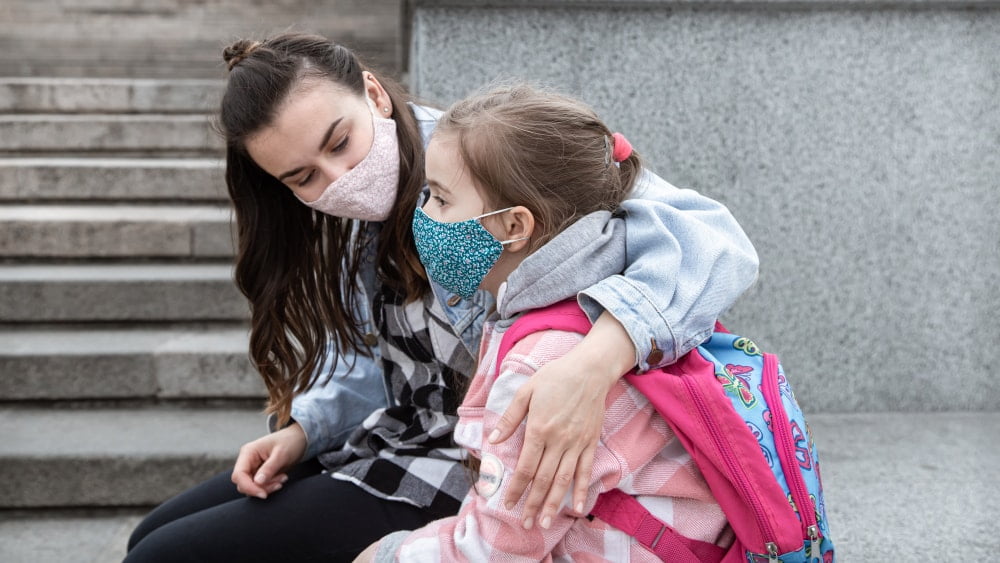The back-to-school season is an exciting time for many parents and children. However, it also increases the risk of illnesses spreading among students. Being aware of common childhood illnesses can help.
1. The Common Cold: Symptoms and Prevention
The common cold is a highly contagious illness that affects children and adults alike. It is caused by various viruses and spreads easily through close contact.
Symptoms to Look Out For:
- Runny nose
- Sneezing
- Coughing
- Body aches
Effective Prevention Measures:
- Properly Wash Hands: Teach children to wash hands frequently with soap and warm water.
- Avoid Sharing Drinks: Encourage not to share drinks or utensils to prevent illness.
- Good Hygiene Practices: Emphasize the importance of covering mouths when coughing or sneezing.
Importance of Hand Hygiene: Proper hand hygiene is crucial to preventing the spread of the common cold. Make sure children understand the importance of washing their hands thoroughly and regularly.
The common cold, while generally mild, can disrupt a child’s school year. Preventive measures are key to keeping children healthy and in school.
2. Strep Throat
Strep throat is a bacterial infection that primarily affects school-aged children. It is a contagious illness caused by the Streptococcus bacteria and requires prompt medical attention.
Common Causes of Strep Throat:
- Bacterial Infection: Strep throat is caused by the group A Streptococcus bacteria.
- Close Contact: Being in close contact with an infected person increases the risk of transmission.
Prevention Tips for Strep Throat:
- Good Handwashing Practices: Encourage good handwashing habits to reduce the risk of infection.
- Avoid Sharing Drinks and Utensils: Teach children not to share drinks or utensils with others.
- Stay Home When Sick: Keep your child home from school if they show symptoms of strep throat to prevent spreading the infection.
Identifying strep throat early and implementing preventive measures can keep your child healthy and ready for the school year.
3. The Flu: Vaccination and Mitigation
The flu, or influenza, is a contagious respiratory illness caused by influenza viruses. Flu season can significantly impact a child’s health and school attendance.
Flu Symptoms and How They Differ From Common Cold:
- Flu Symptoms:
- High fever
- Severe body aches
- Fatigue
- Cough
- Differences: Unlike the milder symptoms of the common cold, flu symptoms are more intense and abrupt.
Importance of Getting Vaccinated:
- Flu Vaccine: Annual flu vaccination is crucial in preventing the flu and mitigating its severity.
Best Practices for Flu Prevention:
- Good Hygiene: Encourage frequent handwashing and the use of hand sanitizer.
- Avoid Close Contact: Teach children to avoid close contact with people who are sick.
- Healthy Lifestyle: Promote a healthy lifestyle, including a balanced diet and regular exercise, to boost the immune system.
The flu vaccine and preventive measures are essential in protecting children from this highly contagious illness during the school year.
4. Pink Eye (Conjunctivitis): Quick Remedies
Pink eye, also known as conjunctivitis, is a common childhood illness that affects the eye. It is highly contagious and can rapidly spread in school environments.
Symptoms and Causes:
- Redness in the Eye: The eye appears red and irritated.
- Discharge: Watery or thick yellow/green discharge.
- Itchiness: Eyes feel itchy and uncomfortable.
Effective Treatments and Preventive Measures:
- Antibiotic Eye Drops: For bacterial conjunctivitis, prescribed antibiotic eye drops can be used.
- Avoid Touching Eyes: Teach children to avoid touching their eyes to prevent spreading.
- Clean Hands Regularly: Ensure hands are clean to reduce the chance of infection.
- Stay Home When Contagious: Keep the child home if they have a pink eye to prevent spreading to other kids.
Prompt treatment and preventive care can help manage pink eye effectively, making sure children get back to school quickly.
5. Gastroenteritis: Avoiding the Stomach Bug
Gastroenteritis, commonly known as the stomach flu, is an inflammation of the stomach and intestines. It is highly contagious and can cause significant discomfort.
Common Symptoms and Duration:
- Symptoms: Include nausea, vomiting, diarrhea, and stomach cramps.
- Duration: Symptoms typically last 1-3 days, though stomach bugs can sometimes last longer.
Importance of Hydration and Rest:
- Stay Hydrated: Ensure children drink plenty of fluids like water and electrolyte solutions to stay hydrated.
- Proper Rest: Encourage rest to allow the body to recover.
Tips to Prevent the Spread:
- Good Hygiene: Teach proper hand hygiene and the importance of hygiene after using the bathroom.
- Avoid Contaminated Food/Water: Ensure food and water are clean and safe.
- Disinfect Surfaces: Regularly clean and disinfect surfaces to reduce the spread of the virus.
By following these practices, you can greatly reduce the risk and spread of gastroenteritis during the school year.
6. Head Lice: Identifying and Eradicating
Head lice are tiny insects that infest the scalp, causing itching and discomfort. They spread easily through close contact, making school environments particularly susceptible.
Signs of Head Lice Infestation:
- Itching: Persistent itching on the scalp, neck, and ears.
- Visible Lice: Tiny, light brown insects on the scalp.
- Nits: Small white or yellowish eggs attached to hair shafts.
Preventive Measures to Avoid Re-infestation:
- Avoid Sharing Personal Items: Encourage children not to share hats, combs, or pillows.
- Regular Checks: Conduct regular head checks to identify and treat infestations early.
- Wash Bedding and Clothing: Clean items that may have come in contact with lice in hot water.
By taking these steps, head lice can be effectively managed and prevented, minimizing disruption to the school year.
7. Sore Throat: Causes and Soothing Remedies
A sore throat is a common symptom in children that can be caused by viral or bacterial infections. Understanding the causes and remedies is crucial for effective relief.
Differentiating Between Sore Throat and Strep Throat:
- Sore Throat: Often caused by viral infections, with symptoms like runny nose and cough.
- Strep Throat: A bacterial infection with symptoms like swollen tonsils and white patches in the throat.
Preventive Tips to Avoid Sore Throats:
- Good Handwashing Practices: Reduce the risk of infections.
- Avoid Close Contact with Sick Individuals: Lessens the chances of catching a sore throat.
Proper care and preventive actions can help alleviate sore throat symptoms and keep children healthy and ready for school.
Final Thoughts
Awareness and preventive measures are critical in managing back-to-school illnesses. By understanding symptoms and taking swift action, parents can help ensure a healthier, more successful school year for their children.
Additionally, scheduling a school physical with your child’s pediatrician is a proactive step. A thorough check-up can identify any health concerns early, boost your child’s immune system, and provide the necessary vaccinations to keep your child healthy throughout the school year. Stay informed, stay prepared, and ensure your child has a prosperous school year ahead.



